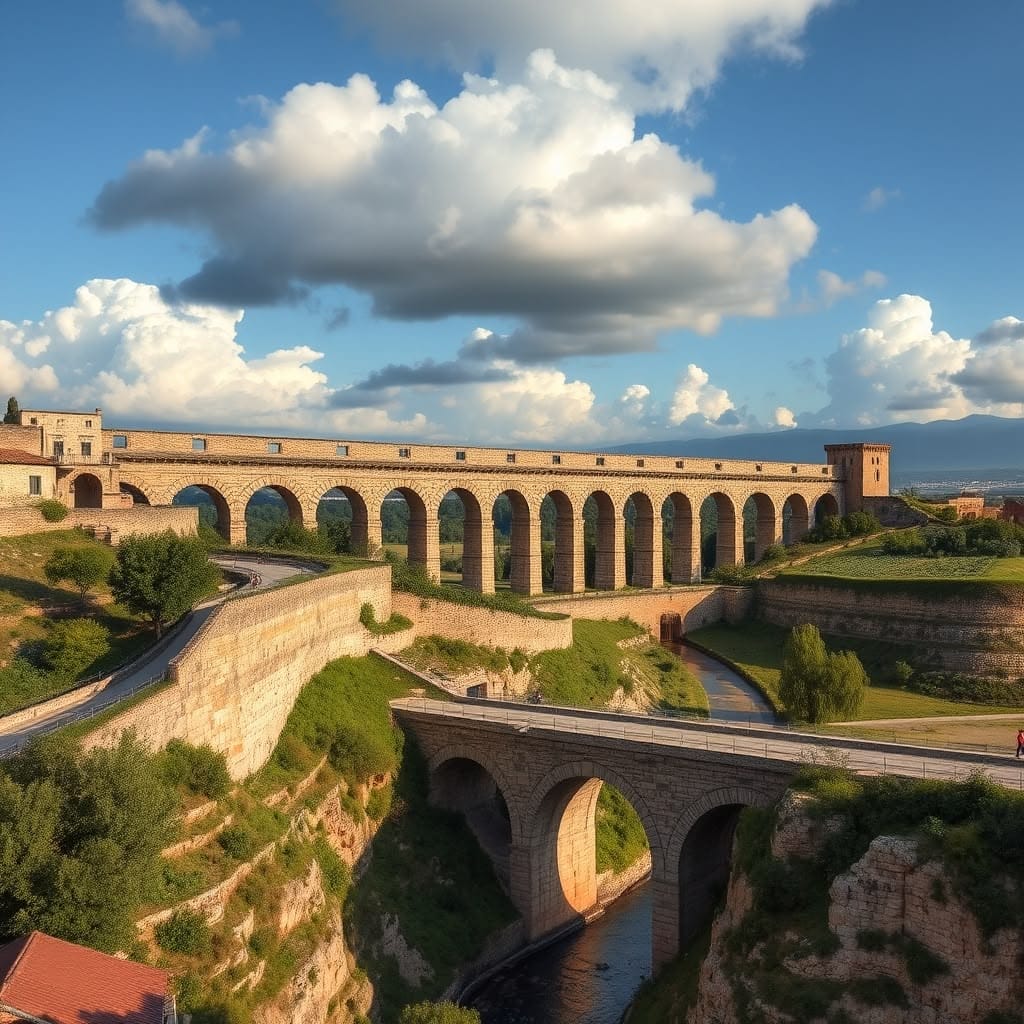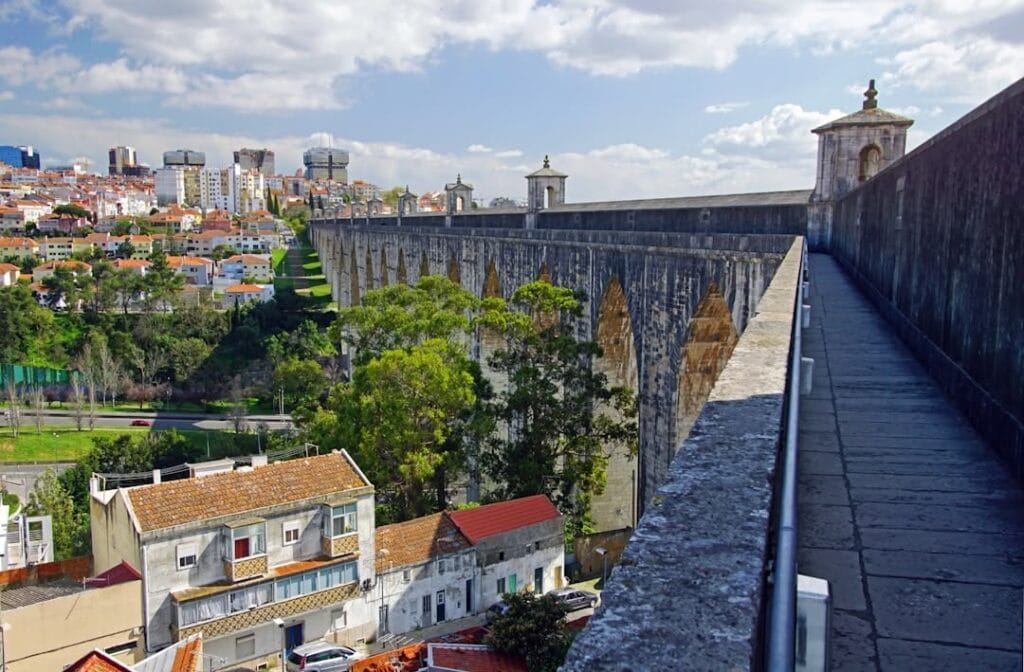The Roman Empire’s unparalleled military success was not solely attributed to its formidable legions. A crucial component of its dominance lay in the sophisticated infrastructure that underpinned its operations. The empire’s ability to project power over vast distances was facilitated by a network of engineering marvels.
Roads, bridges, and aqueducts served as the backbone of Roman military logistics. These structures not only enabled the swift movement of troops and supplies but also ensured sustained control over conquered territories. Roads connected major cities and outposts, while bridges allowed armies to overcome natural barriers swiftly. Aqueducts provided vital water supply to remote forts, supporting prolonged military campaigns.
Through these engineering feats, Rome established a robust infrastructure that played a pivotal role in its military and administrative efficiency.
Strategic Importance of Roman Roads
Facilitated Rapid Troop Movement
The Roman road network was a cornerstone of military mobility. Roads such as the Appian Way, constructed in 312 B.C., were designed to enable legions to cover up to 20 miles a day. This rapid movement allowed the Roman military to respond swiftly to threats, ensuring the Empire’s stability.

Connected Major Cities and Military Outposts
Roman roads were vital in linking major cities and military outposts, facilitating the integration of newly conquered territories. By connecting captured cities with Rome, these roads supported the establishment of colonies and the projection of power across the Empire.
Enhanced Communication and Logistics
Beyond troop movement, Roman roads played a crucial role in communication and logistics. A network of post houses and supply depots along these routes enabled efficient resource distribution and communication. This infrastructure not only supported military operations but also helped maintain control over vast territories, underscoring the strategic importance of roads in Roman military dominance.
Engineering Marvels: Roman Bridges
Roman bridges were instrumental in ensuring strategic mobility for military operations, allowing legions to swiftly cross natural barriers such as rivers and valleys. The use of materials like stone and concrete, coupled with precise engineering techniques, ensured these bridges were not only durable but strategically positioned to support logistical needs.

“The ability to cross obstacles without delay enabled Roman forces to outmaneuver their enemies.”
Notable examples of Roman bridges include Trajan’s Bridge across the Danube River, known for its unprecedented length, and the Roman Bridge in Merida, Spain, the longest still standing today. The Pons Fabricius in Rome, the oldest bridge still in its original state, exemplifies their engineering mastery.
| Bridge Name | Location | Notable Feature |
|---|---|---|
| Trajan’s Bridge | Serbia/Romania | Longest Roman bridge ever built |
| Roman Bridge | Merida, Spain | Longest standing Roman bridge |
| Pons Fabricius | Rome | Oldest original Roman bridge |
Aqueducts: Lifelines for Roman Forts
Aqueducts were indispensable to the Roman military, providing a reliable water supply essential for maintaining the health and efficiency of garrisons. From the Claudian period, aqueducts facilitated a steady flow of water to permanent fortresses, while auxiliary forts began receiving these crucial infrastructures during the Flavian period. This ensured that the Roman military could sustain long-term campaigns even in remote regions.

- Ensured a continuous water supply for drinking, baths, and sanitation, vital for military readiness.
- Supported the establishment of bath-houses in forts, improving soldier hygiene and morale.
- Contributed to operational efficiency by reducing the need for foraging expeditions.
Noteworthy examples include the Pont du Gard in France, crucial for Nimes’ military presence, and the Claudio Aqueduct in Italy, supporting Rome’s military logistics. As historian “The strategic design of Roman aqueducts reflected their dual role in civilian and military life.”
In addition to providing infrastructure, aqueducts were sometimes exploited during warfare, as seen in historical sieges where they became both a resource and a tactical vulnerability.
Maintaining Control Over Conquered Territories
The Roman Empire’s infrastructure was pivotal in sustaining control over its vast territories. The extensive road networks facilitated not only the rapid movement of troops but also ensured swift communication across the empire. This capability allowed quick responses to rebellions, reinforcing Roman authority and stability.

Moreover, infrastructure such as roads and ports played a crucial role in facilitating trade and cultural integration. By connecting distant provinces to the heart of Rome, these routes encouraged economic activity and cultural exchange, integrating local economies into the Roman system. This economic interdependence helped stabilize regions and reduce the likelihood of rebellion.
“The infrastructure of the Roman Empire was a cornerstone of its administrative prowess, ensuring effective governance across vast territories.”
In addition, the development of urban centers and a standard postal system enabled efficient administration, allowing for the dissemination of information and orders from the central government. The Roman infrastructure was not merely about physical construction; it was a strategic tool for governance, control, and cultural integration.
Impact on Roman Military Tactics
Enhanced Mobility and Flexibility
The extensive network of Roman roads and bridges was integral to the army’s mobility. With over 250,000 miles of roads, troops could move quickly across regions, as exemplified in the rapid deployment during the Pannonian Revolt. This infrastructure allowed Roman forces to respond swiftly to threats and maintain control over vast territories.

Allowed for Surprise Attacks and Quick Retreats
While the Romans excelled in set-piece battles, their infrastructure also supported tactical retreats and surprise assaults. In engagements with the Britons, infrastructure played a dual role. Romans could launch quick counterattacks while the Britons used the landscape for surprise strikes, showcasing the flexibility of Roman logistics in adapting to guerrilla warfare.
Supported Supply Lines
The Roman military’s success relied heavily on its robust logistics and supply lines. Roads and bridges ensured a steady flow of resources, crucial during prolonged campaigns like those in Dacia. This logistical strength enabled sustained military operations, securing Roman dominance over diverse and challenging terrains.
Economic Strength through Infrastructure
The sophisticated infrastructure of the Roman Empire was pivotal in enhancing its economic strength. An extensive interconnected network of roads, ports, and cities facilitated efficient trade and resource distribution across the empire. This network not only supported the movement of agricultural products and manufactured goods but also ensured a stable economic framework during the Pax Romana.

| Infrastructure Element | Economic Benefit |
|---|---|
| Roads | Facilitated transport and trade, contributing to the emergence of market towns |
| Ports | Enhanced Mediterranean trade, enabling the exchange of goods |
| Aqueducts | Supported urbanization and specialization, boosting economic activities |
The Roman road network, initially constructed for military purposes, eventually became vital for economic growth and stability. This infrastructure not only supported military logistics but also facilitated the integration of conquered territories into the economic fold. Through strategic investments in infrastructure, the Romans were able to maintain both military readiness and economic prosperity, thereby reinforcing their dominance across the empire.

Conclusion: Infrastructure as a Pillar of Dominance
The Roman Empire’s engineering prowess, exemplified by its roads, bridges, and aqueducts, was instrumental in securing military dominance. These infrastructural marvels enabled rapid troop deployment, facilitated trade, and supported military logistics, thereby integrating conquered territories into the Roman fold. The enduring legacy of Roman infrastructure is evident in modern economic prosperity, with ancient road networks continuing to influence urban development and economic activity. This historical precedence underscores the critical role infrastructure plays in establishing and maintaining power, highlighting the necessity for strategic investment in such projects to ensure long-term economic and military stability.

FAQ on Roman Roads, Bridges, and Aqueducts
How were Roman roads constructed? Roman roads were meticulously constructed using layers of materials for durability. The process involved excavating a trench, layering it with rubble, gravel, and sand, and finishing with large paving stones. This method ensured the roads could withstand heavy use and last for centuries.
What was the primary purpose of Roman bridges? Roman bridges were primarily built to facilitate the rapid movement of military forces and supplies across rivers and other obstacles. They were constructed using durable materials like stone and concrete, often incorporating arches for added strength.
Did aqueducts only serve military forts? While aqueducts were crucial in supplying water to military forts, they also served civilian populations, urban centers, and public baths. Their extensive reach helped sustain large cities and supported agricultural activities.
Is it true that Romans invented concrete? Yes, the Romans are credited with developing concrete, a revolutionary building material. They utilized a mix of volcanic ash, lime, and water, which allowed for robust construction projects, including roads and aqueducts.
Were all Roman roads straight? While many Roman roads are famously straight, this was not universally the case. Roads were often adjusted to the landscape, avoiding difficult terrain when necessary, to ensure practicality in construction and use.

